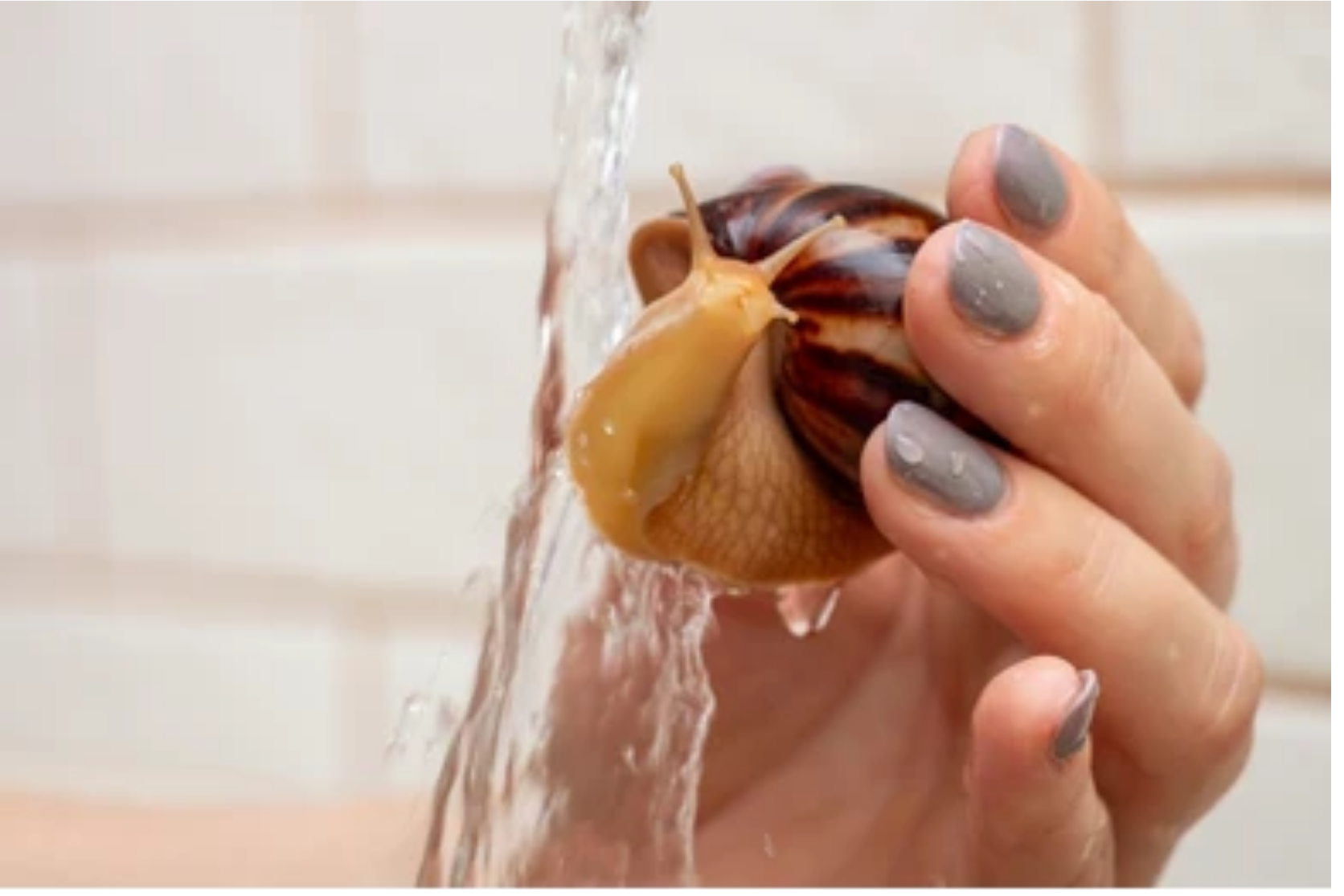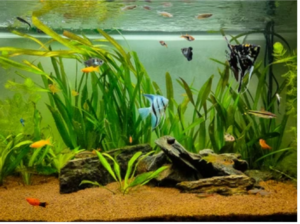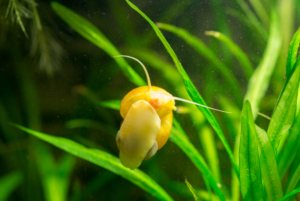Like other aquatic pets, snails require a stable and suitable environment to thrive. And what is more crucial to aquatic life than the very foundation it swims in – water. But before you add water to your aquarium, have you pondered whether the tap water you use is safe for your snails?
Tap water will not kill freshwater snails as long as chlorine and copper levels are within safe thresholds for humans. Snails can endure chlorine concentrations above 4 PPM. However, high copper levels can harm snails. Bottled spring water or well water can provide the best aquatic environment.
In this article, I will explore the impact of tap water on snails, particularly the effects of chlorine, and how to make tap water safer for these creatures to flourish.
How Tap Water Affects Snails
Understanding how tap water impacts snails is crucial for their optimal care. Snails can typically tolerate this water source as long as the following elements remain within safe thresholds:
- Chlorine
- Copper
- Dirt levels in tap water
However, snails can be sensitive to elevated levels of chlorine and copper. They may attempt to escape from their tank if the conditions are unsuitable.
Despite these factors, many tanks worldwide operate on tap water, and snails appear to thrive in these environments.
By maintaining appropriate temperature levels (between 65 and 75 degrees), freshwater snails can generally survive in tap water.
If you want to learn about the impact of snails on bioload in aquariums, read the following article for a comprehensive explanation.
Chlorine Concentrations in Water
Tap water treatment is essential to ensure its safety for human consumption. Although more advanced options, such as reverse osmosis, exist, most municipalities rely on chemical treatments, with chlorine being the most commonly used.
Water is rigorously tested for chlorine levels before being released to homes, with a maximum allowable concentration of 4 milligrams per liter or 4 parts per million (4PPM) in most US states. This is due to potentially harmful effects on humans and pets.
Interestingly, snails have shown remarkable resistance to chlorine concentrations, surviving even at levels well above what is deemed safe for humans.
A 2019 study on disinfecting invasive snails discovered that some freshwater species could tolerate bleach concentrations of up to 500 parts per million. While this may sound incredible, previous research has documented snail resilience to chlorine-based control techniques.
As one snail enthusiast put it, “A snail can survive an atomic bomb,” highlighting the challenge of eradicating them.
Copper Concentrations in Water
The impact of copper concentrations in water on the health of aquatic creatures, such as snails and fish, has been recognized by scientists.
Copper is a prevalent material used in the construction of pipes, with over 80% of homes currently utilizing copper piping.
Over time, these pipes release varying amounts of copper into the water, which supplements the naturally occurring amount of copper present in water (0.01 mg/L).
When copper concentrations surpass 0.39 mg/L (0.39ppm), it becomes toxic to freshwater snails and other pond animals, leading to fatal consequences.
Therefore, it is advisable to assess the copper composition of tap water before adding it to a tank or aquarium. The ideal concentration of copper for a tank or aquarium is between 0.15 to 0.2 ppm (or 0.15 to 0.2 mg/L). Any concentration exceeding this range creates an unfavorable environment for aquatic life, including snails, fish, and shrimp.
Snails are particularly sensitive to copper since it results in a harmless shock-like reaction on their calcium shells. The + ions in copper carry a charge that interferes with a snail’s slime, prompting them to avoid copper-contaminated water.
Thus, it is imperative to monitor and maintain safe copper levels in water to ensure the health and well-being of aquatic creatures.
To accurately monitor copper levels in your tank, it is recommended to use a copper testing kit. I recommend the API Copper Test Kit (link to Amazon) as a reliable option to precisely detect copper levels ranging from 0-4 mg/l (ppm). This testing kit is widely accessible and available at most outlets, offering ease of use and convenience.
| Preview | Product | |
|---|---|---|

|
API COPPER TEST KIT 90-Test Aquarium Water Test Kit | Check Price |
Preparing Your Tap Water for the Tank
Before adding tap water to your aquarium, it is important to take certain precautions to ensure the health and well-being of your aquatic pets. In this section, I will discuss some effective ways to prepare tap water for your aquarium.
Let the Water Settle for a Day
One simple method to prepare tap water for your aquarium is to allow it to settle for at least a day outside. This can help lower the chlorine levels in the water, especially if you notice a strong chlorine smell.
Over time, the chlorine will evaporate into the air, reducing its concentration in the water. Additionally, letting the water settle allows oxygen to dissolve, which can benefit the aquatic life in your tank.
Use a Charcoal Filter or Water Conditioner
Another option is using a charcoal filter or water conditioner to treat tap water. An activated charcoal water filter, such as the Aquarium Carbon Pad, can help lower the concentrations of various chemicals, such as:
- Chlorine
- Chloramines
- Tannins
- Phenols
This filter can also remove unpleasant odors from the water, making it safe for your aquatic pets.
| Preview | Product | |
|---|---|---|

|
Aquarium Carbon Pad – Cut to Fit Carbon Infused Filter Pad Media for Crystal Clear Fish Tank and… | Check Price |
Alternatively, you can use a water conditioner, such as Seachem Prime Fresh and Saltwater Conditioner, a blend of chemicals that can reduce the concentration of chemicals and nitrates in your aquarium water.
| Preview | Product | |
|---|---|---|

|
Seachem Prime Fresh and Saltwater Conditioner – Chemical Remover and Detoxifier 500 ml | Check Price |
Water conditioners can be used either before the water is added to the tank or while it is in the tank.
Is Water or Spring Water Good?
When it comes to selecting water for your aquarium, you may be wondering whether well or spring water is a good choice.
Water obtained directly from a well or spring can be a good option since it has not been treated with chlorine, which can be beneficial for the health of your aquatic pets.
However, it is important to note that this water may contain higher concentrations of minerals, such as iron, which can impact the overall quality of your aquarium water.
To ensure the safety and quality of your aquarium water, I recommend filtering or conditioning your well or spring water before adding it to the tank. This can help remove any impurities or minerals that may harm your aquatic pets.
Using a water filter or conditioner can also help improve the taste and odor of the water, making it a more pleasant environment for your pets to thrive.
Bottom line: Well or spring water, when poured directly into a tank, is considered safer than tap water.
Can Snails Live in Dirty Water?
Adding snails to an indoor tank containing dirty water may not be advisable for a few reasons.
- It may not be aesthetically pleasing.
- The water may contain a high concentration of chemicals that could potentially harm the snails.
Final Thoughts
Snails generally thrive in tap water which is commonly available in most regions. Municipal water treatment facilities perform routine checks to ensure chlorine and copper concentrations are safe for human consumption.
Although snails can tolerate these levels of chlorine and copper without significant harm, it is crucial to regularly monitor the concentration levels in your tank to ensure they remain within acceptable limits.
Test kits for chlorine and copper concentrations are widely available at most retail outlets. It is advisable, whenever possible, to use well or spring water in your tank.
Frequently Asked Questions
Can land snails drink tap water?
Land snails can drink tap water, but it’s important to provide them with fresh, dechlorinated water to ensure their health and well-being. Chlorine in tap water can harm snails, so it’s recommended to let tap water sit out for 24 hours or use a de-chlorinator before offering it to them.
Is bottled water OK for snails?
Bottled water can be an option for snails, but it’s important to choose water that is low in minerals and has no added flavors or carbonation. Avoid giving them distilled water, which is too pure and lacks essential minerals. Additionally, it’s recommended to provide the water in a shallow dish that is changed frequently to ensure freshness.
Can snails survive in chlorinated water?
Chlorine in water can harm snails and other aquatic creatures, and it’s recommended to avoid exposing them to chlorinated water. High chlorine levels can damage their skin and respiratory systems; even low levels can cause stress and affect their overall health.
Can snails live in tap water?
Some species of snails can live in tap water, but it’s not recommended to keep them in it long-term. Tap water may contain chlorine and other chemicals that can harm snails. It’s better to provide them with clean, dechlorinated water or a freshwater aquarium.
Do land snails need dechlorinated water?
Land snails do not need dechlorinated water as they breathe through their skin and do not absorb water through their respiratory system. However, they still need clean, fresh water for hydration and moisture. It’s recommended to use filtered or distilled water or leave tap water out overnight to allow the chlorine to evaporate before giving it to your land snail.
Sources
- PlantedTanks.net: Why Doesn’t My Tap Water Kill Snails?
- Urban Undergrowth: How to Get Rid of Slugs and Snails Naturally: 36 Methods Including Copper
- Aquatic Community: Snail Control & Copper
- Health.vic: Copper in Water
- Air Assurance: Should Copper Pipes Sway Your Home Buying Decision?
- Taylor & Francis Online: Tests of Disinfection Methods for Invasive Snails and Zooplankton: Effects of Treatment Methods and Contaminated Materials



